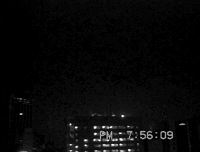Sharing researchMuch of the impetus for the creation of the World Wide Web was as a way to quickly "publish" experimental findings in the scientific community. Indeed, for its first 20 years or so, the Internet was primarily a communications network between academics.The Musee d'art contemporain de Montreal's Thematic Scan Project is an attempt to not only take advantage of "Internet velocity" but also to expand the audience beyond expert-to-expert to anyone. "Since December 1, 1996, the public has been able to follow developments in a research project under way at the Musée, the results of which are being disseminated via the Internet. The . . . main objective is to locate key information and report it quickly and efficiently. A team of experts systematically filters a sphere of knowledge, collects the latest data, organizes it and passes it on to the decision makers. In this highly competitive environment, information can spell the difference between success and failure. The cultural field obviously presents other characteristics, but the basic idea has been kept and adapted to the museum context.""Transparency" is one of the critical success factors for the digital museum. This can be prosaic, like the posting of heretofore internal reports for public consumption. For example, The Minneapolis Institute of Arts and the Walker Art Center post online quarterly reports to the State regarding their grant for the ArtsConnectEd initititive. In a more in-depth and public way, both the Museum of Modern Art and the Cincinnati Contemporary Arts Center have very complete, informative, and revealing presentations of their searches for architects for new buildings. Revelation becomes promotion. In an even more personal way, curators Barbara London (MOMA) and Philippe Vergne (Walker Art Center) have posted online multimedia diaries of research trips to China, Russia, and Japan, which make for fascinating reading/viewing/listening. Esther Dyson has said that people will pay to be made to feel like an insider. Even if museums do not intend to turn this inside-out view into a revenue stream, such sharing helps establish and strengthen potential relationships with their audiences.
|

What would you like to know about the way the Museo de Monterrey works?
next | previous | index Thematic Scan Project Cincinnati Contemporary Arts Center new building Stir-Fry. Barbara London hikes the back roads of the Middle Kingdom in her quest for the best Chinese Media Art. InterNyet. MoMA curator Barbara London delves into the underground art world of Russia and Ukraine searching for innovative media artists. Empire of Signs. Walker Art Center Visual Arts Curator, Philippe Vergne, investigates the sights, sounds and SIGNS of Tokyo and beyond. "It is like having a relationship with someone who does not understand what you want and then offers you something you did not ask for."
|